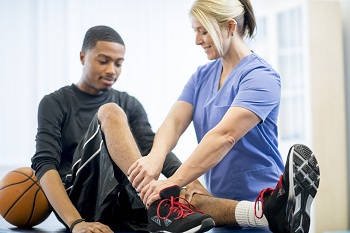 Much was made during the Summer Games in Rio when U.S. Olympic legend Michael Phelps showed up poolside with several dark red bruises on his body.
Much was made during the Summer Games in Rio when U.S. Olympic legend Michael Phelps showed up poolside with several dark red bruises on his body.
He and several other athletes turned to "˜cupping' to heal sore muscles-a therapy based in ancient medicine in which cups are placed on top of the skin before a vacuum is created by pumping air out, drawing the skin into the cup, breaking surface blood capillaries, theoretically leading to increased blood flow, quickening healing and recovery while reducing pain.
But does it work?
"There is no good research that proves cupping helps," said Jeannine Hurst, MS, AT/ATC, coordinator for the McLaren Macomb Athletic Medicine Institute. "Scientific studies have also not disproven it either, but at the same time there is growing evidence and research supporting physical therapy as being an excellent treatment option for athletic recovery."
A single-blind study published in March tested how well cupping worked to treat patients with neck and shoulder pain. With 30 patients receiving cupping therapy, another 30 received no treatment at all. Patients who underwent cupping reported significant improvement in pain compared to those who received no treatment at all.
"This and similar studies don't account for the potential for the placebo effect." Hurst said. "The placebo effect can be very powerful-simply believing that you're getting effective treatment can help you feel better, even perform better."
There is much more evidence-based research supporting therapist-led physical therapy in treating athletes.
"Our experienced therapists consistently get great results treating sports-related injuries using modalities and manual therapy to decrease pain and individualized exercise instruction which also helps to prevent future flare ups," said Mike Mulcahy, MPT, director of rehabilitation services at McLaren Macomb.
McLaren Macomb rehabilitation services utilizes a computerized video system used to record and analyze movement-such as running, throwing, swinging-in slow motion in order to identify and correct abnormal movement patterns to help decrease pain and potentially enhance performance.
To learn more about rehabilitation services offered at McLaren Macomb or to inquire about setting up a physical therapy appointment, visit mclaren.org/main/rehabilitation.